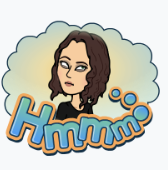
At a department meeting this spring, our supervisor asked our team of educational leaders an important question. “How do you define success in your role?” We often ask similar questions regarding our students, “What will success look like in our content area? How will we determine mastery of learning goals?” But how often do we consider these questions for our own work? My first thought was, I am successful if those I serve are successful. But how do I further define this success, where do I start, and what actions might I take to get there?
The Reflective Process
In this collaborative meeting, I first had the opportunity to consider this question individually before sharing with a partner and then to the large group. I have found this to be an especially effective strategy in professional learning workshops as well as in classrooms. Self-reflection and goal setting activate the engagement network of the brain, in accordance with the Universal Design for Learning framework. When we allow individuals to self-reflect before sharing with a partner, the affective filter is lowered. Learners are given the opportunity to engage in a metacognitive task without fear of judgment from others. Take some time to reflect on your own, to consider your own definition of success as an educator, before speaking with a colleague.

As a learner, I also appreciated the opportunity to take notes in the way that works best for me. As you reflect, record your thoughts in the way that works best for you, even if it seems unconventional. This activates the strategic network of the brain, as learners are encouraged to demonstrate understanding with multiple options for action and expression. I prefer to color-code my notes, using the pen on my Pixelbook. Others best ideate, process information, and synthesize information using sketchnotes, word processing software, dry erase markers on whiteboards or tables, notes on post-its, or markers on chart paper. Each of these methods was used by individuals during this collaborative meeting. My supervisor embraced our variability and gave us autonomy as we engaged in this thoughtful experience.
The Norm: Backwards Planning
In the past, I have created criteria for success and steps to get there by using a backwards planning process. As a classroom teacher, curriculum coach, and administrator, I worked with educators to first create end goals for student mastery of standards and then developed pacing guides that we believed would support learners toward these end goals.
A Different Approach

As I considered success in my role most recently, I took an opposite approach. Rather than beginning with the end in mind, I began with those I serve. If I do not take the time to collect information regarding the needs of stakeholders, it will be nearly impossible for me to meet their needs. Rather than starting with standards, I decided to start by getting to know those I serve. I considered my learnings in recent years regarding improvement science, which indicates our work must be user-centered. Similarly, design thinking encourages us to begin with empathy for the end-user. In flipping my approach as such, I developed a working explanation of success in my role as a consultant who works with adult learners and their students: “I will know I am successful if I identify the needs of stakeholders, build my capacity to meet these needs, curate &/or develop corresponding resources, & then engage in activities that lead to increased stakeholder knowledge & implementation”. This goal of success is contextual, personalized, and meets variability. And it begins not with an end in mind, but with individuals. It creates the foundation for an organic approach, not a one-size fits all program for success.
I began to consider if this approach relates to classroom planning as well. Is it appropriate to plan for learners we do not yet know? Are we then focusing more on standards than on learners themselves? What if instead of planning backwards, we planned forward? What if we started by identifying the needs of the learners we serve, then built our capacity to meet those needs, and finally implemented supports that would lead to growth for each and every learner in our midst?
